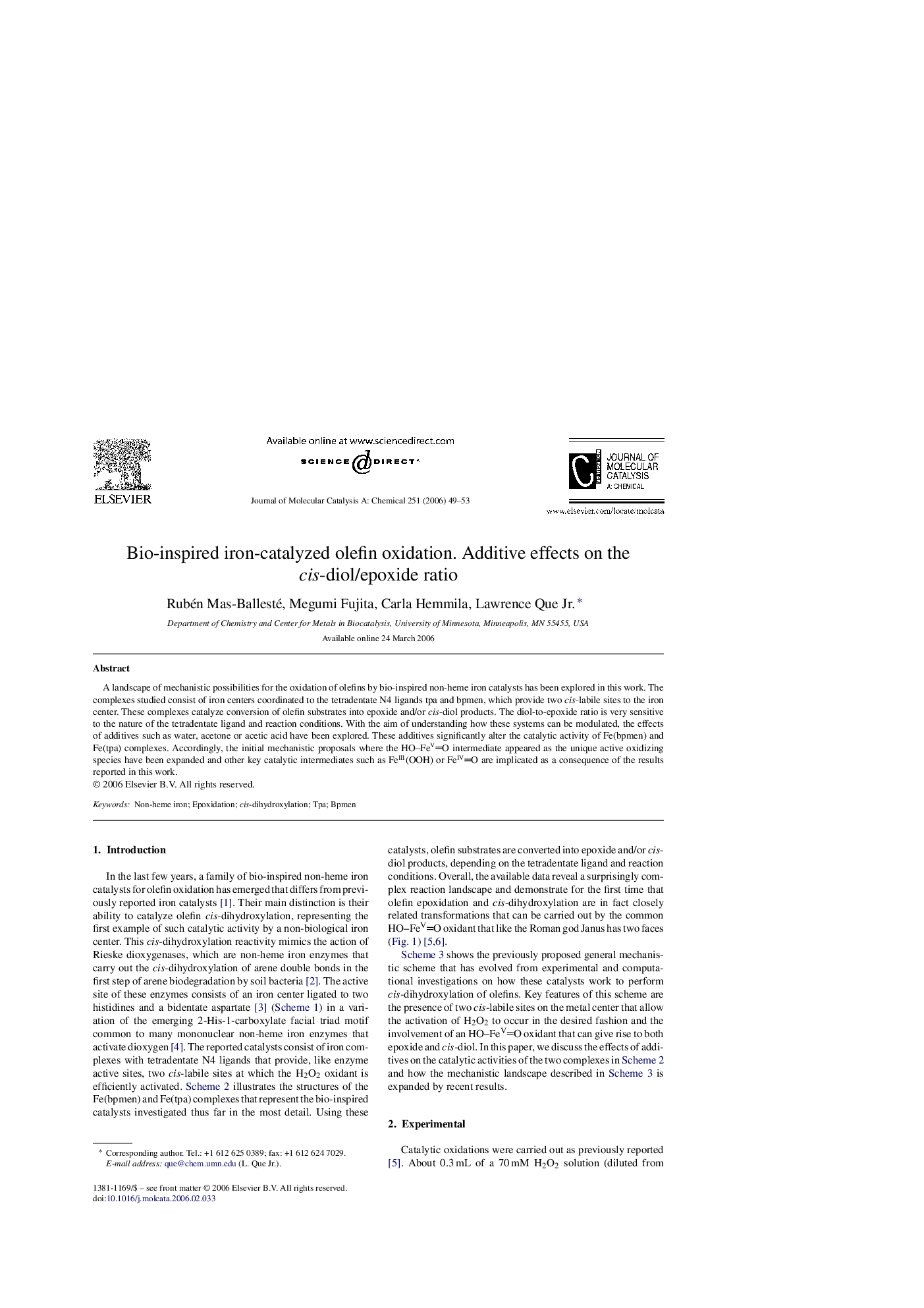| Article ID | Journal | Published Year | Pages | File Type |
|---|---|---|---|---|
| 68473 | Journal of Molecular Catalysis A: Chemical | 2006 | 5 Pages |
A landscape of mechanistic possibilities for the oxidation of olefins by bio-inspired non-heme iron catalysts has been explored in this work. The complexes studied consist of iron centers coordinated to the tetradentate N4 ligands tpa and bpmen, which provide two cis-labile sites to the iron center. These complexes catalyze conversion of olefin substrates into epoxide and/or cis-diol products. The diol-to-epoxide ratio is very sensitive to the nature of the tetradentate ligand and reaction conditions. With the aim of understanding how these systems can be modulated, the effects of additives such as water, acetone or acetic acid have been explored. These additives significantly alter the catalytic activity of Fe(bpmen) and Fe(tpa) complexes. Accordingly, the initial mechanistic proposals where the HO–FeVO intermediate appeared as the unique active oxidizing species have been expanded and other key catalytic intermediates such as FeIII(OOH) or FeIVO are implicated as a consequence of the results reported in this work.
Graphical abstractFigure optionsDownload full-size imageDownload as PowerPoint slide
